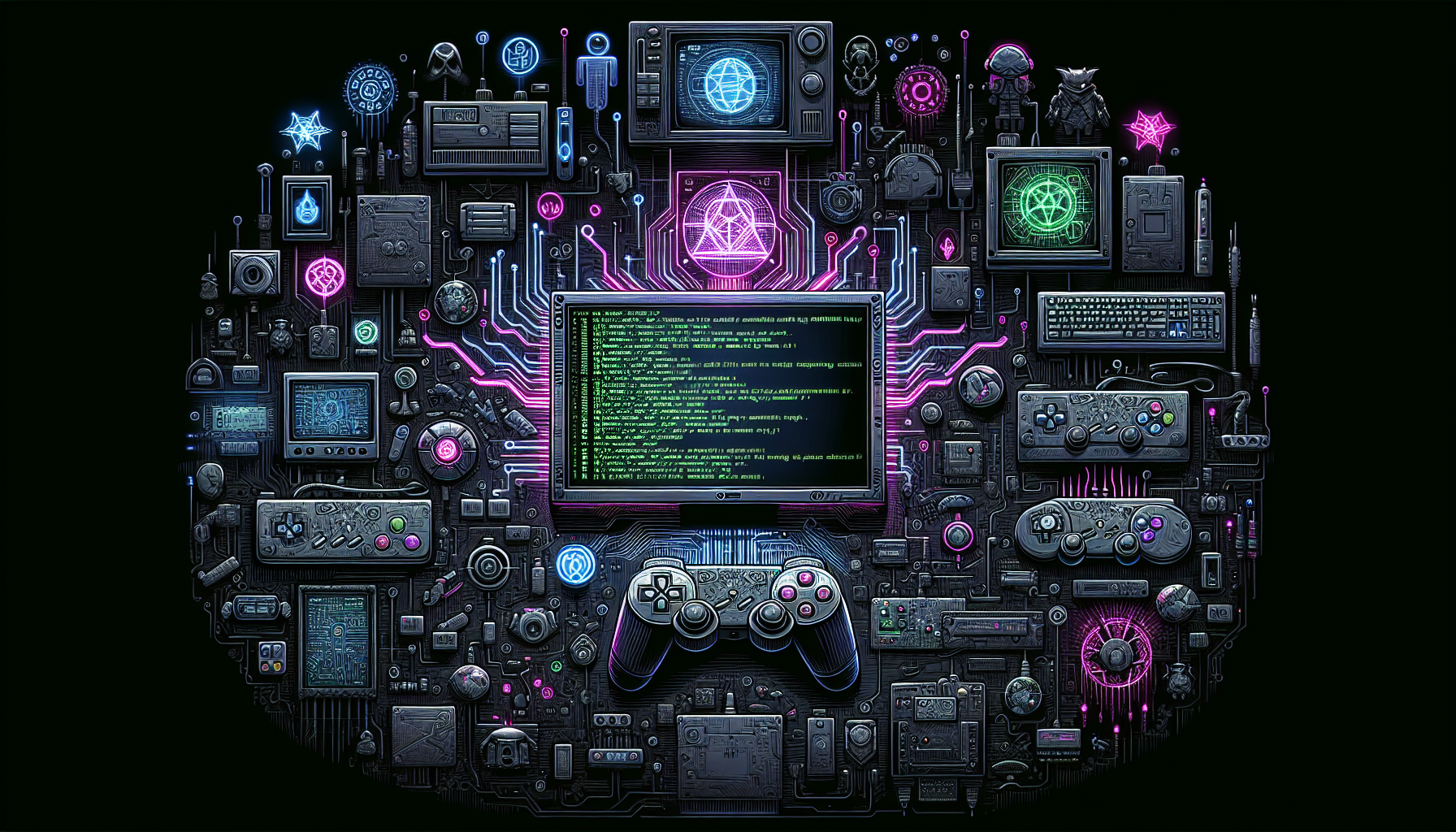In the world of gaming, customization and personalization are king. For the tech-savvy enthusiast, hacker, maker, or digital privacy advocate, the ability to tweak, modify, and enhance a gaming controller is not just a hobby; it’s a passion. Today, we’re diving deep into the intricate process of crafting custom firmware for gaming controllers—a niche but fascinating topic that combines software development, hardware tweaking, and a bit of creative problem-solving.
Why Custom Firmware?
Before we jump into the technical deep end, let’s explore the ‘why’. Custom firmware on gaming controllers can unlock a plethora of benefits, including:
-
Enhanced Performance: Fine-tune your controller to the millisecond, ensuring that your input lag is minimized, and your reactions are as quick as possible.
-
Personalization: Map buttons to your exact liking, create macros for complex in-game actions, and adjust stick sensitivity to your precise preferences.
-
Privacy and Security: With custom firmware, you’re in control. You know exactly what data your controller is sending and to whom.
-
Learning and Innovation: The process of creating and flashing custom firmware is a fantastic learning experience, offering insights into how gaming controllers work at a fundamental level.
The Technical Dive
Now, let’s get into the nitty-gritty. Crafting custom firmware for a gaming controller involves several key steps, each with its own set of challenges and considerations.
Understanding the Hardware
The first step is to thoroughly understand the hardware of your gaming controller. This means identifying the microcontroller used, understanding the communication protocols (USB, Bluetooth, etc.), and getting familiar with the GPIO (General Purpose Input/Output) pins for button inputs and LED controls.
Reverse Engineering
Next is the reverse engineering phase. This involves using tools like a logic analyzer or an oscilloscope to monitor the data being sent from the controller to the gaming console or PC. This data helps in understanding the original firmware’s functionality, which is crucial for creating a custom version that can either replicate or enhance these functions.
Firmware Development
With a solid understanding of the hardware and the original firmware’s functionality, the next step is to start the firmware development. This involves setting up a development environment, choosing a programming language (C and Assembly are common choices for low-level hardware programming), and beginning the coding process.
For instance, modifying the USB descriptors to change the device name or adjusting the polling rate for faster response times. Here’s a basic snippet that demonstrates modifying a USB descriptor in C:
|
|
This snippet alters the device descriptor of a USB device, a fundamental step in custom firmware development for gaming controllers.
Flashing the Firmware
Once the firmware is developed, the next challenge is flashing it onto the controller. This typically requires a specific tool or programmer compatible with the controller’s microcontroller. Care must be taken to ensure the process doesn’t brick the device, rendering it inoperable.
Troubleshooting and Testing
After flashing, extensive testing is required to ensure the firmware works as intended. This includes functional testing of all buttons, sticks, and any additional features like LEDs or vibration motors. Troubleshooting issues at this stage often involves debugging code, re-flashing, and sometimes hardware modifications.
Potential Issues and How to Troubleshoot Them
Creating custom firmware is not without its challenges. Here are some potential issues you might encounter along the way:
-
Bricking: If the firmware flashing process goes wrong, you might end up with a non-functional controller. To mitigate this, always ensure you have a reliable way to reset the controller to its original state.
-
Compatibility: Custom firmware might cause compatibility issues with certain games or systems. Rigorous testing across multiple platforms can help identify and rectify these issues.
-
Performance: Achieving the desired performance improvements might require iterative tweaking and testing. It’s crucial to have patience and a methodical approach to optimization.
Next Steps and Variations to Explore
With the basics of custom firmware under your belt, there are numerous directions to explore. Here are a few suggestions:
-
Advanced Input Customization: Explore creating complex macros or integrating motion controls for a unique gaming experience.
-
Wireless Enhancements: Improve the efficiency of wireless communication protocols to reduce latency and extend battery life.
-
Security Features: Implement encryption or other security measures to protect your controller’s data transmission.
-
Community Contributions: Share your custom firmware creations with the community. Collaborate with others to push the boundaries of what’s possible.
Crafting custom firmware for gaming controllers is a technical challenge that rewards those willing to dive deep into the details. It offers an unparalleled opportunity to customize your gaming experience, understand the inner workings of modern gaming hardware, and contribute to a community of like-minded tech enthusiasts. Happy hacking!
